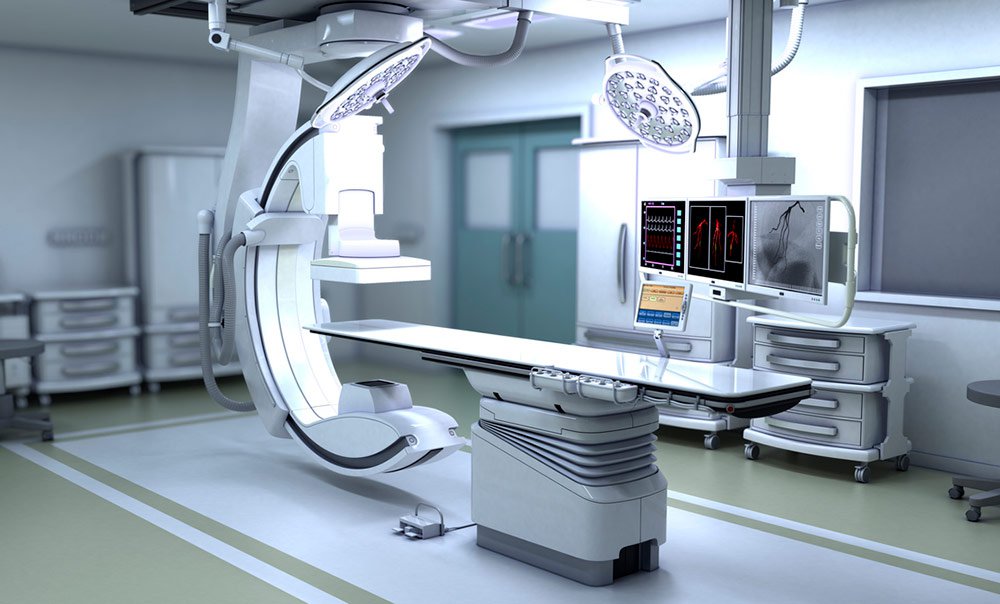Building an interventional radiology suite can be a smart investment, allowing interventional physicians to offer previously unavailable procedures.
The question for most hospitals or outpatient facilities looking to build an interventional radiology suite is: what do we really need? How can we maximize our investment and the utility of the IR suite?
Here are a few things to consider when you’re planning for a new IR suite:
What goes into the IR suite?
There are several key things to consider when planning an IR suite. To begin with, the types of procedures that it will be used for and the space and equipment needed to perform them. For example, angioplasty, stent placement, chemoembolization, and biopsy are all common IR procedures these days and involve different professional input.
There may be radiologists, interventional radiologists, vascular radiologists, cardiologists, electrophysiologists, anesthesiologists, surgeons, and nurses all with a role to play in the IR suite. It is important to understand what each user’s role is and the space required. Getting the input of the people who will use the suite is a smart move in the planning phase.
Each unique discipline has its own set of equipment and standards that must be followed with regard to installation. For example, issues like radiation exposure, HVAC, vibration and equipment location must be planned for. Some equipment (such as c-arms) are very sensitive to vibration, which may come from sources such as mechanical fan units.
The Society of Interventional Radiology published “Resource and Environment Recommended Standards for the IR.” Among their recommendations are that the interventional radiology (IR) surgical suite should be at least 650 square feet, with three to four rooms dedicated for IR patient surgical preparation and recovery.
“Patient flow in the IR periprocedural areas should be under the control of the IR team and not dependent on recovery room availability related to other services, unless the area is specifically designed for this purpose and procedures, policies, and processes are established and defined to ensure adequate staffing and space needs for safe and appropriate patient care,” they wrote. “There should be a process in place by which to monitor and optimize patient and procedure/room turnover; workflow in the IR suite should not be delayed by inadequate resources for patient care and recovery after the procedure.”
Ceiling height must also be considered to accommodate a biplane. A ceiling height of between 9’6″ and 9’9″ is required depending on the imaging vendor.
Provisions should also be made for space in the case of surges, including agreements for hospital transfers if needed.
Equipment
Here is a list of equipment that is generally required in an IR suite:
- Imaging equipment
- Imaging table
- Electrophysiology systems
- Hemodynamic equipment
- Anesthesia machines
- Perfusion systems
- Surgical instrument tables
- Ultrasound equipment
- Recording equipment/computers
- Lead aprons and glasses
- Scrub area, including sinks
In addition, The Society of Interventional Radiology recommends: “The preparatory and recovery areas must be located in a setting with adequate electrical, oxygen, suction, anesthesia, and emergency services. There must be appropriate temperature and humidity control, air exchange and ventilation, lighting, computer terminals, PACS access, and monitoring equipment. Access to basic and advanced resuscitation equipment as well as necessary medications and fluids and adequate support area for supplies, nutritional support, ice machines, blanket warmers, and nursing space are also required.”
Changes in the IR suite
The IR suite has evolved over recent years. Where previously it mostly consisted of catheterization, stents and PCI procedures, theranostics is now opening up a whole new set of uses and requirements for the IR suite. If you’re researching what should be included in your new IR suite, then it’s worth paying attention to theranostics.
As it sounds, theranostics is a combination of the diagnostic and the therapeutic. Diagnostics might include the use of radiotracers such as gallium-68 and scandium-44 used in PET/CT or contrast agents like gadolinium (III) used in MRI.
The therapeutic component generally involves a drug molecule that is either directly linked to the diagnostic component or is associated with a carrier system. For example, peptide-based molecules like Y90 or nanobody molecules.
The idea is that patient care is more personalized. Custom treatment plans can be administered right there in the IR suite, meaning the right drug is administered to the right patient at the right time. Oncology is currently one of the major areas adopting theranostics, with examples such as identifying a molecular target on a tumor in a specific place, then administering a therapy agent to specifically target that area.
Theranostics means that you may need more room in an IR for simultaneous procedures. Again, you will need to consider the medical personnel and equipment required.
Theranostics and Portable Nuclear Imaging in the IR
Y90 studies involve transporting the patient to the nuclear medicine suite post-procedure, however now, mobile cameras (such as the Ergo) can be brought into the interventional suite instead. This offers not only better efficiency but improved safety without the need to transport the patient. The patient doesn’t have to be kept sedated for as long and doesn’t need an anesthesia team to transport with them.
The type of camera used with theranostics is important. An issue with traditional gamma cameras is that PMTs may miss data on the images. A camera such as the Ergo, with its digital technology, captures all data without any holes and provides a more accurate picture.
Final thoughts
The IR suite has some unique design and equipment requirements that allow for it to meet state-of-the-art use cases. Special consideration should be given to the design of the space so that equipment, personnel and procedures have the room they need.
Having an IR suite can be a worthy investment, capitalizing on trends for minimally invasive procedures. Be sure to get the input of the medical professionals who will use the suite as part of design planning. Your IR has the potential to be one of the busiest areas of your facility.




